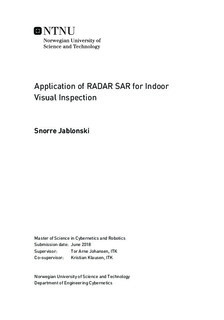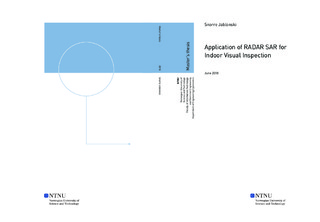| dc.description.abstract | Utilizing Unmanned Aerial Vehicles (UAVs) for the purpose of indoor visual inspection poses great possibilities within many industries regarding cost reduction and efficiency. The development of mapping techniques and collision avoidance systems for UAVs is in the wind, but there are many challenges that remains to be solved. One of the big challenges is that of creating reliable and accurate imagery of local environments by the use of small robust low cost sensors. Radio Detection and Ranging, also known as Radar, is a promising contender within this domain. Because there are limited test results of Radar on small sized UAVs, it remains to be seen if Radar proves as promising as the literature might suggest. \\
During the course of this thesis, the fundamentals of Radar technology along with a review of different types of Radars will be assessed with emphasis on UAV applications before moving on to the principles of Synthetic Aperture Radar (SAR). Challenges and possibilities concerning collision avoidance by the use of SAR on small-sized UAVs will also be discussed. Furthermore, signal processing theory, techniques and different classifications of SAR algorithms will be presented. These sections will be built upon the research presented in my project thesis \cite{Snorre}. The thesis will move on to present a Python implementation of a simple SAR algorithm. The algorithm will be tested on different data sets acquired by a light-weight Ultra-Wide Band (UWB) Radar mounted on a multirotor UAV. Using the acquired test-data, several SAR images of different environments, ranging from simple environments with easy-to-see objects to mildly cluttered environments including hard-to-see elements such as wires. The test results, concluding SAR as a feasible method for collision avoidance purposes, will be presented in an orderly manner. The results, combined with the literature presented in this thesis will be thoroughly reviewed in a closing discussion while addressing the possibilities of future research prospects within the same domain. | en |

